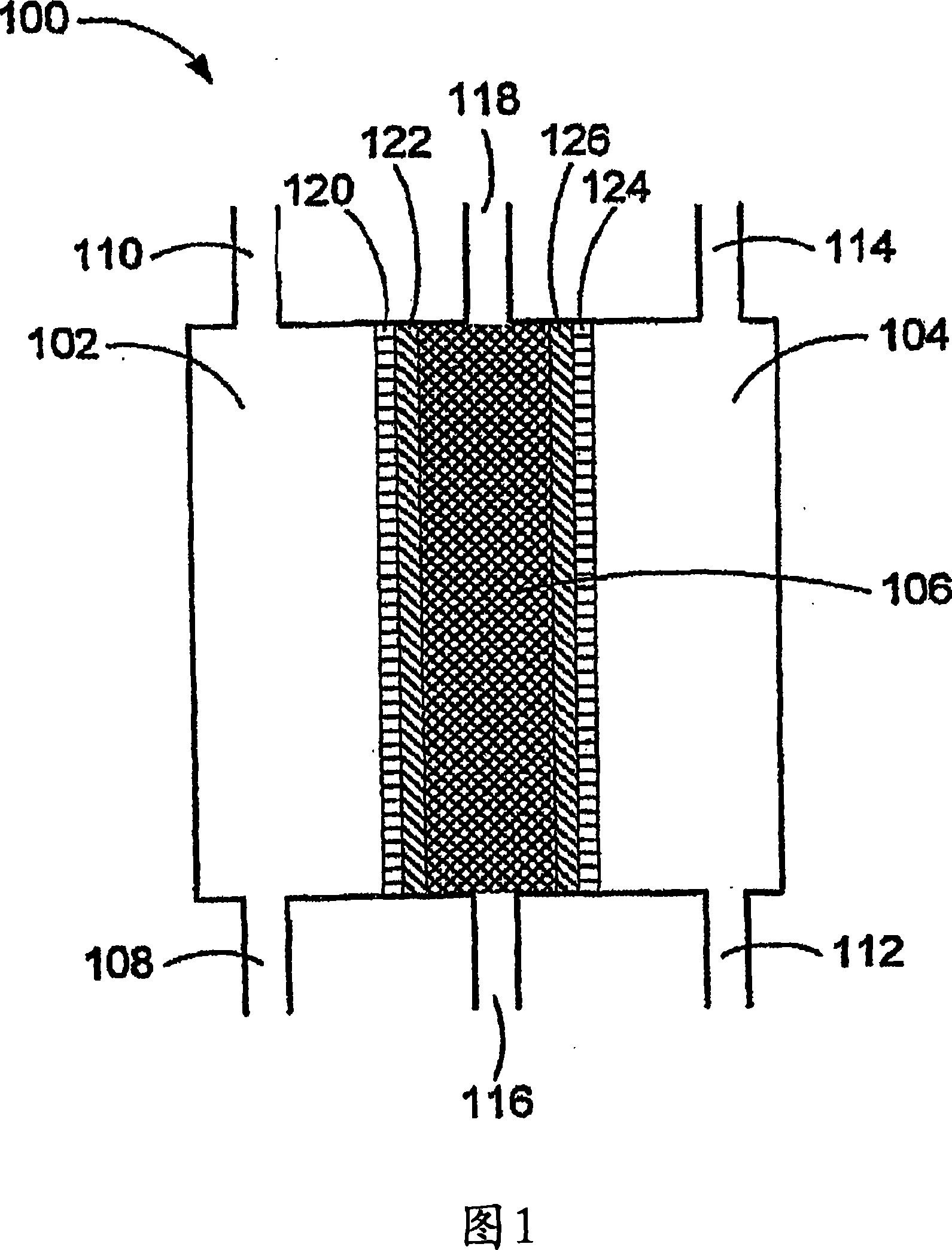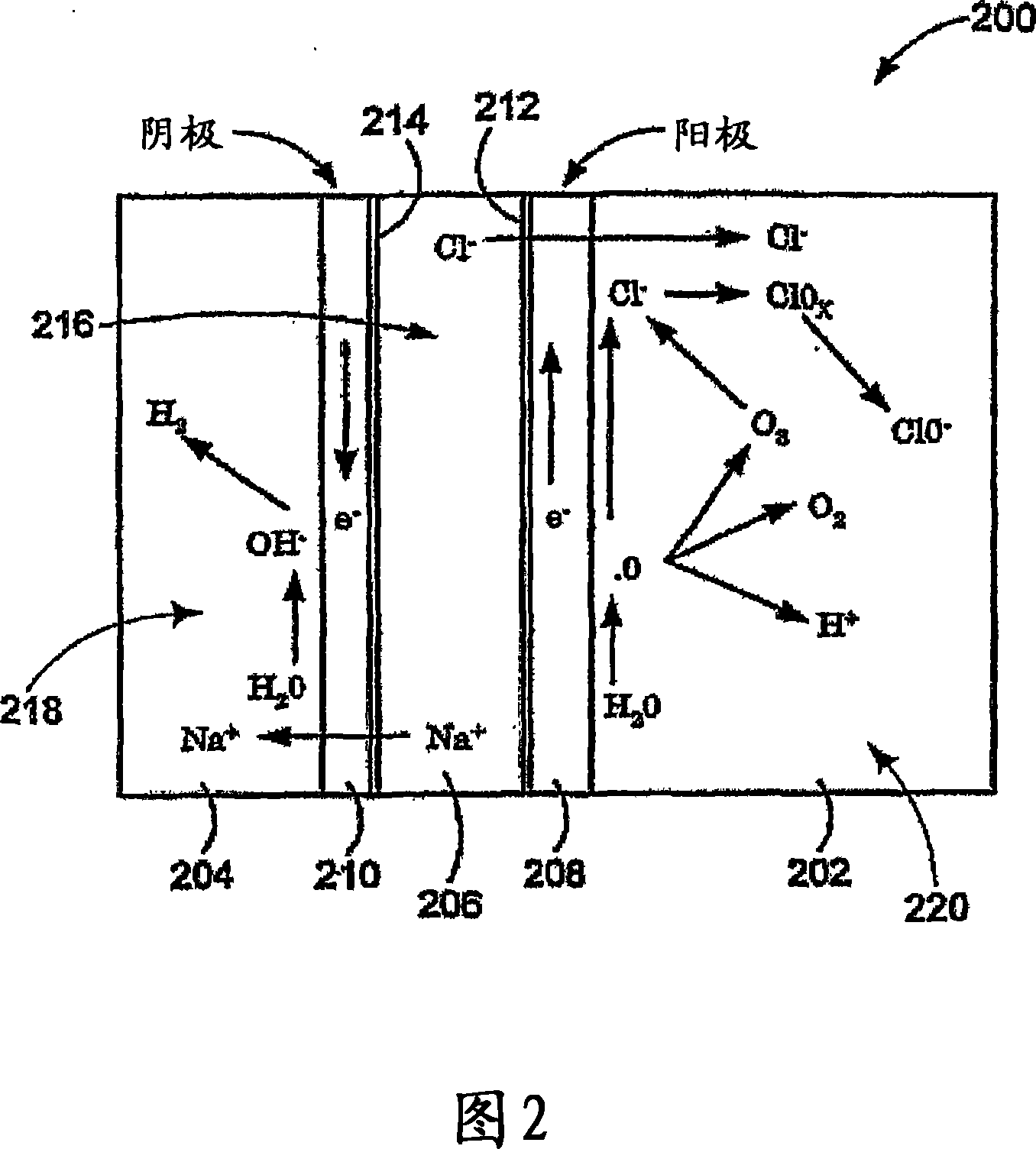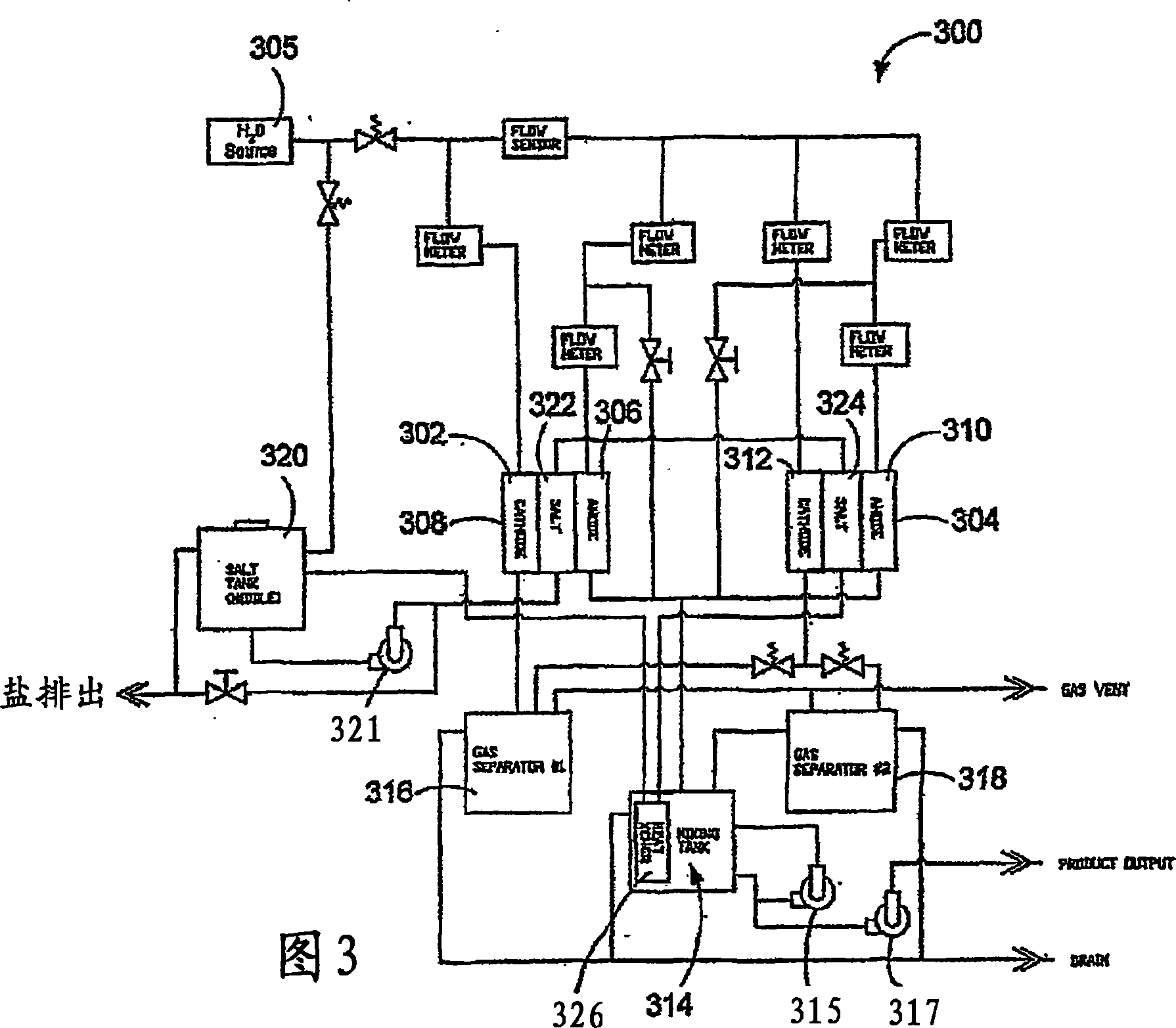Method of treating skin ulcers using oxidative reductive potential water solution
An aqueous solution and solution technology, applied in the direction of active ingredients of peroxides, drug combinations, skin diseases, etc., can solve problems such as not being able to produce enough ORP water
- Summary
- Abstract
- Description
- Claims
- Application Information
AI Technical Summary
Problems solved by technology
Method used
Image
Examples
Embodiment 1-3
[0203] These examples demonstrate the unique characteristics of the ORP water solution of the present invention. The ORP water solution samples of Examples 1-3 were analyzed according to the methods described herein to determine the physical properties and levels of ionic species and other chemical species present in each sample. The results obtained for chlorine dioxide, ozone, and hydrogen peroxide are based on the standard test methods used to determine these species; however, the results may indicate a different species that may also produce a positive test result. Furthermore, it has been reported that chlorine dioxide, ozone, and hydrogen peroxide can react with hypochlorite, causing their consumption as well as other species such as HCl and O 2 ) generation. Table 1 shows the pH, oxidation-reduction potential (ORP) and ionic species present for each ORP water solution sample.
[0204] Table 1: Physical characteristics and ion species contained in ORP water solution sa...
Embodiment 4-10
[0208] These examples demonstrate the addition of varying amounts of bleach to the ORP water solution of the present invention. In particular, these examples demonstrate the antimicrobial activity and fabric bleaching capabilities of the compositions.
[0209]A 10% Clorox(R) bleach solution was prepared in distilled water. The following solutions were then prepared with 10% bleach solution: 80% ORP water solution / 20% bleach (Example 4); 60% ORP water solution / 40% bleach (Example 5); 40% ORP water solution / 60% bleach 20% ORP water solution / 80% bleach (Example 7); and 0% ORP water solution / 100% bleach (Example 8). Two control solutions were also used for comparison, including 100% ORP water solution / 0% bleach (Example 9) and ORP water solution with 0.01% Tween 20 detergent (Example 10). The physical characteristics of these samples were determined, especially pH, oxidation-reduction potential (ORP), total chlorine (Cl - ) content, hypochlorous acid (HClO - ) content, chlorin...
Embodiment 11
[0222] This example relates to the toxicological characteristics of the ORP water solution of the present invention. Microcyn 60 (or M60) - an exemplary ORP water solution of the present invention - was used in these studies.
[0223] In terms of safety, M60 has no irritation to the skin or conjunctiva of rabbits as tested according to international standards (AAMI 1997, NV SOP 16G-44, PFEUM 2000). In addition, acute inhalation toxicity studies in rats confirmed the safety of Microcyn 60 administered by this route.
[0224] The irritation potential of Microcyn 60 was evaluated in a primary eye irritation study in rabbits. Microcyn 60 in a volume of 0.1 mL was instilled into the right eyes of 3 New Zealand white rabbits. The left eye of each animal was left untreated as a control. Eyes were observed and scored for corneal ulceration or opacity, iris inflammation, conjunctival redness, or conjunctival edema at 1, 24, 48, and 72 hours. All animals were also observed once dail...
PUM
 Login to View More
Login to View More Abstract
Description
Claims
Application Information
 Login to View More
Login to View More - R&D
- Intellectual Property
- Life Sciences
- Materials
- Tech Scout
- Unparalleled Data Quality
- Higher Quality Content
- 60% Fewer Hallucinations
Browse by: Latest US Patents, China's latest patents, Technical Efficacy Thesaurus, Application Domain, Technology Topic, Popular Technical Reports.
© 2025 PatSnap. All rights reserved.Legal|Privacy policy|Modern Slavery Act Transparency Statement|Sitemap|About US| Contact US: help@patsnap.com



